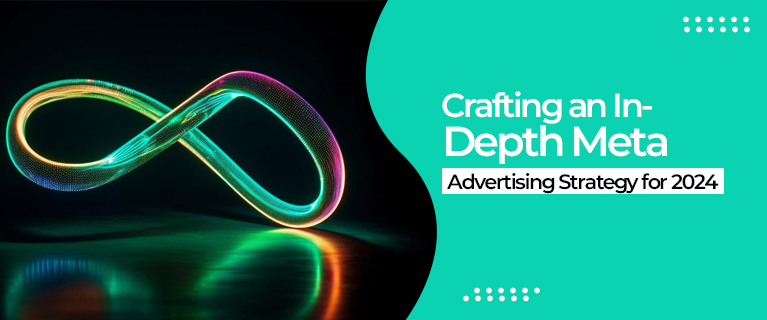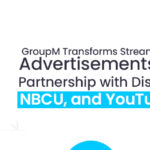In today’s dynamic digital marketing landscape, establishing a strong advertising strategy on Meta platforms, such as Facebook and Instagram, is essential for businesses seeking success in both lead generation and ecommerce. Menachem Ani, a recognized PPC expert and the founder of JXT Group, recently introduced a thorough seven-step framework at the SMX Next conference. This guide will delve into Ani’s insights, offering businesses valuable guidance to navigate and optimize their campaigns effectively on Meta platforms, providing a comprehensive overview of the ever-evolving digital advertising landscape.
Read Also This – A Comprehensive Exploration of Generative Engine Optimization
This blog is an inspiration from Ani’s framework, unveiled at SMX Next that serves as a roadmap for businesses looking to maximize their presence and impact on Meta platforms. With Facebook and Instagram being key players in the digital space, understanding the nuances of these platforms is crucial for a successful advertising strategy.
The first step in this comprehensive guide is recognizing the importance of Meta platforms in the context of lead generation and ecommerce. As digital spaces become increasingly saturated, businesses must leverage the unique features of Meta platforms to stand out and reach their target audience effectively.
Read Also This – A Comprehensive Exploration of Generative Engine Optimization
Menachem Ani’s expertise comes to the forefront as he introduces a seven-step framework tailored for success on Meta platforms. The framework encompasses key aspects such as lead generation, ecommerce optimization, and understanding the distinctive dynamics between Meta Ads and Google Ads.
This blog emphasizes that Meta platforms offer a diverse array of possibilities compared to Google Ads. While Google Ads cater to users actively searching for specific products or services, Meta platforms enable businesses to engage users higher up in the sales funnel, creating demand and capturing it later. This insight underscores the unique opportunities for brand building and consumer education that Meta platforms provide.
The guide further explores the multi-channel approach recommended by Ani. While the nature of the business should guide the choice between Meta and Google Ads, Ani advocates for a holistic strategy that incorporates both channels. This approach ensures diversification and taps into multiple sources of revenue, enhancing the overall effectiveness of a digital marketing campaign.
Read Also This – Google Ads Updated its Gambling and Games Policy
Ani’s framework is not limited to ecommerce; it also sheds light on the potential of Meta platforms for lead generation. By prioritizing quality over quantity in lead generation efforts, businesses can ensure that their messages resonate with the right audience, avoiding the pitfalls of spam leads.
Menachem Ani’s comprehensive guide provides businesses with actionable insights to navigate the complexities of Meta advertising successfully. Whether focusing on lead generation or ecommerce, businesses can leverage Ani’s framework to create targeted and impactful campaigns on Facebook and Instagram. As the digital advertising landscape continues to evolve, staying informed and implementing strategic approaches is key to achieving success on Meta platforms.
Read Also This – A Comprehensive Guide to Dominating the Top Social Media Platforms
Understanding the Unique Dynamics: Meta Ads vs. Google Ads
In the ever-evolving landscape of digital advertising, businesses are faced with the challenge of choosing the most effective platforms to reach their target audience. Two giants in the digital advertising space, Meta platforms (formerly Facebook) and Google Ads, stand out with their distinct approaches and capabilities. Ani, a seasoned marketing strategist, sheds light on the critical distinctions between these platforms, highlighting the importance of aligning advertising strategies with the nature of the business.
Read Also This – Create Your Localized Google Business Profile Listing or You Might Experience Problems
Google Ads, renowned for its search engine prowess, excels at targeting users actively seeking products or services. This platform leverages users’ intent, displaying ads when potential customers are in the midst of a search. This is particularly advantageous for businesses offering commoditized products, where users are already in the mindset of making a purchase decision. Ani emphasizes that Google Ads can be a powerful tool for converting high-intent users into customers swiftly.
On the other hand, Meta platforms present a different set of opportunities. Ani suggests that Meta’s strength lies in its ability to engage users higher up in the sales funnel. Instead of targeting users actively searching, businesses on Meta can create demand and capture it later. This makes it an ideal space for product-centric brands to build brand awareness and educate consumers. Ani underscores the diverse array of possibilities on Meta, from immersive visual content to interactive ad formats, providing businesses with creative avenues to connect with their audience.
Read Also This – Google Battles Massive Spam Attack Threatening Search Activity
Ani advocates for a nuanced approach in choosing between Meta and Google Ads, asserting that the nature of the business should be the guiding factor. For businesses with more commoditized products, leading with Google Ads may yield faster conversions. Conversely, product-centric brands may find Meta platforms more effective for building a brand narrative and engaging users at an earlier stage in the customer journey.
However, Ani firmly asserts the importance of adopting a multi-channel approach. Diversification, according to Ani, is the key to harnessing multiple sources of revenue. By combining the targeted intent-driven approach of Google Ads with the brand-building potential of Meta platforms, businesses can create a comprehensive strategy that addresses various stages of the customer journey. This not only mitigates risks associated with relying solely on one platform but also maximizes the reach and impact of advertising efforts.
Read Also This – Google Explains Why Useful Links May Not Be So Important
To sum up, Ani’s insights underscore the dynamic nature of digital advertising and the need for businesses to align their strategies with the unique strengths of Meta platforms and Google Ads. By understanding the distinct advantages each platform offers, businesses can tailor their approach, creating a harmonious and diversified advertising strategy that optimally serves their goals.
Lead Generation on Facebook and Instagram:
Contrary to the common perception that Meta ads are primarily geared towards ecommerce, Ani highlights their effectiveness in lead generation. He stresses the need for a well-thought-out strategy to ensure messages reach the right consumers. The ability of Meta platforms to capture leads higher up the funnel provides a unique advantage, allowing businesses to create demand and nurture potential customers before they actively search for a product or service.
Ani acknowledges the challenge of dealing with potential spam leads in Meta lead generation campaigns. The system tends to optimize for form submissions rather than real-time revenue, which can result in lower-quality leads. Striking a balance to get better quality leads, even if it means fewer form submissions, becomes crucial. Ani’s insights shed light on the complexities of lead generation in the Meta landscape and offer practical strategies to mitigate challenges.
Read Also This – Enhancing PPC Account Health In 2024: A Guide To Avoiding Pitfalls & Maximizing ROI
A Seven-Step Lead Generation Framework:
Ani shares a comprehensive seven-step strategy to enhance lead generation results on Facebook and Instagram. Each step is explored in detail, providing actionable insights for businesses. Key steps include focusing on leads over traffic, testing dynamic and standard creatives, utilizing customer lookalikes and interests, leveraging Facebook and Instagram’s reach, thinking beyond video creatives, creating dedicated landing pages, and emphasizing that conversions are not sales. The framework is designed to address the unique challenges and opportunities associated with lead generation on Meta platforms.
Read Also This – Studies suggest that 94% of Google SGE links deviate from Organic Search Results
Ecommerce Ads on Facebook and Instagram: Leveraging Real-Time Revenue Tracking
Ani delves into the nuances of running ecommerce campaigns on Meta platforms, highlighting the real-time revenue tracking capabilities. He notes that while lead generation often translates to sales, high fraud rate industries pose challenges. Ani emphasizes that ecommerce doesn’t have to be purely transactional, suggesting the integration of various campaigns like Performance Max, Demand Gen, and YouTube. The guide provides an in-depth exploration of how businesses can optimize their ecommerce strategies on Meta platforms, considering factors such as fraud prevention and campaign diversification.
Read Also This – Using Chat GPT for Keyword Research
A Seven-Point Ecommerce Framework: A Strategic Blueprint
Ani provides a seven-step guide for driving ecommerce results on Facebook and Instagram. The framework encompasses testing Advantage+ carefully, going broad on targeting, focusing on purchase objectives, trusting in a seven-day click attribution, experimenting with various creative formats, matching creative cycling to spend, and keeping ad naming consistent for effective tracking. Each step is analyzed in detail, offering businesses a strategic blueprint for optimizing their ecommerce campaigns on Meta platforms.
Conclusion:
In conclusion, navigating the Meta advertising landscape requires a nuanced understanding of the platforms and a strategic approach. Menachem Ani’s seven-step frameworks provide invaluable insights for optimizing lead generation and ecommerce campaigns on Facebook and Instagram. As businesses strive for success in 2024, integrating these strategies into their digital marketing efforts can pave the way for effective and impactful campaigns.
Read Also This – GroupM Transforms Streaming Advertisements in Partnership with Disney, NBCU & YouTube
This comprehensive guide serves as a roadmap for businesses looking to harness the full potential of Meta platforms in their advertising endeavors. From understanding the unique dynamics of Meta Ads versus Google Ads to implementing a detailed lead generation framework and optimizing ecommerce strategies, the guide covers every aspect of creating a winning Meta advertising strategy. As the digital landscape continues to evolve, businesses that adapt and implement these insights will be well-positioned to thrive in the competitive world of online advertising.



